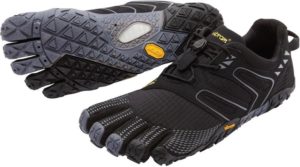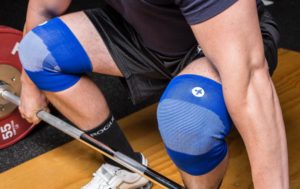
I was asked recently what the standards were at BKC for wearing lifting gear. While I encourage new lifters to train with no gloves, no shoes and no belt; there are reasons for that just as there are reasons for lifting with gear. Here are my recommendations…
Raw vs Geared Lifting
First let’s highlight the differences between raw and geared lifting as these terms are specific to powerlifting. In most federations, “raw” allows for a belt and sleeves only; equipment that does not assist the lift. “Geared” lifting includes wraps and specifically designed lifting suits; equipment that provides a rebound effect.
Some of these suits can add over a 100lbs to the lift. For example, the world records set in the raw bench press is 739lbs, with a “bench shirt” the record is 1075.
Proponents of such gear claim that these suits are for safety. I don’t buy it. When you have to “pull” 500lbs down to get the bar to touch your chest in the bench press, you’ve changed the lift. You’re no longer competing against people (or yourself); you’re competing against who has the best gear.
I have no interest in such nonsense. So for the purposes of this article, I’m referring to “gear” as any lifting equipment you’d wear to the gym, in raw powerlifiting or strongman competitions. My intended audience is serious strength trainees, not geared powerlifters.
Minimalist
There are a couple reasons I believe it’s better to start your lifting journey with little to no equipment. First of all, there should be no barrier to begin. You can get plenty strong in a pair of shorts and a t-shirt.
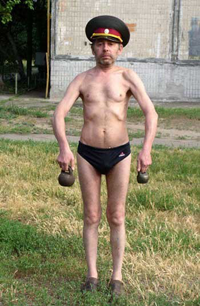 If there is anything you should spend your money on first, it’s a gym membership and/or coaching (and then some home equipment). It’s more important that you exercise properly (and consistently) than it is what you lift in.
If there is anything you should spend your money on first, it’s a gym membership and/or coaching (and then some home equipment). It’s more important that you exercise properly (and consistently) than it is what you lift in.
Second, lifting gear used too early in training can become a crutch. It’s better to build up a base level of strength that does not depend on whether or not you have a belt on. We want what we do in the gym to carry over to real life, otherwise what good is it?
Third, it just looks silly. Wearing a bunch of stuff to lift little baby weights… c’mon!
Footwear
Going barefoot is recommended for most of your training. The reason for that is to strengthen your feet. When your shoes give you arch support, balance, roll prevention and whatever else, your feet no longer have to.
There is also some science to how lifting barefoot will make you stronger, which I will go over when I discuss gloves.
However, if there’s a first purchase when it comes to gear it should be footwear.
Minimalist Shoes
Obviously it’s not appropriate to be barefoot all the time. Most gyms require shoes and there are some instances where the cons outweigh the pros of barefoot training.
There are a number of products out there that you can get for less than $100. Flat sole without a lot of cushion is all you really need (doesn’t have to be “toe shoes”. These will be good to do most all of your lifting in, at least to start.
Lifting Shoes
As you get more serious about lifting heavy your next purchase should probably be lifting shoes. “Lifters” have hard soles, a stability strap and elevated heels.
The elevated heel will account for some of the need for ankle dorsi-flexion in squatting movements (thus making it “easier” to squat). Powerlifting shoes typically have a 3/4″ heel lift and weightlifting shoes up to 1.5″ heel lift.
Unless you plan on Olympic style weightlifting, specifically front squats, overhead squats and high bar ATG squats; a powerlifting shoe will suffice. I recommend Adidas for either one.
Lifting Belts
Lifting belts are the most misunderstood piece of equipment. They don’t protect your back like commonly thought to; they provide support to the abdominal region allowing you to “brace” better.
When used properly, you push your abs into your belt and that allows you to stay tighter during heavy lifts.
Belts that have a narrow front and wider area for the back are not designed properly. A good lifting belt will be 3-4″ wide all the way around. It should also be 10-13mm thick leather and have a single or double prong, or lever fastener.
Lighter lifters can get away with the velcro style belts, but I wouldn’t expect those to hold up under more than a couple hundred pounds.
The real question is when to use a belt?
Again, my belief is that belts, like most lifting gear, is really to help you lift more weight. Start using it too early in your career and you will become dependent on it.
It’s hard to say how much training you should have under your belt before you buy one (see what I did there?). That depends a lot on age, strength, how hard you’re training and how you’re progressing, but I would say 1-2 years lifting minimum.
I don’t mean 1-2 years lifting kettlebells either (a lifting belt is not recommended for kettlebells, unless you compete). I’m talking about 1-2 years of heavy barbell work.
At least get to your first real plateau before adding a belt. A new lifter should be able to add weight to the bar every month (and likely every week) for the first year or two in training.
After that, start using a belt if you want. Give yourself a couple months to break it in and learn how to use it properly. You can expect your squat and deadlift to go up 10-20lbs almost immediately, and much more the stronger you are.
I have an Inzer Forever belt that I bought 15 years ago (and it’s more than I’ll ever need). If I use it (which I don’t always), it’s only when I go over 75-80% in the squat or deadlift.
Sleeves
Knee and elbow sleeves provide compression and warmth to the joints. They add to the feeling of security and readiness to lift.
I got to the age of 37 before I felt like I needed knee sleeves. I noticed that in the winter it was taking me longer to feel like my knees were warmed up before squatting. Before that I had never used them in training or competition.
However, once I started to wear them I could immediately feel the difference. Sleeves, unlike wraps, do not assist the lift, they just support the joint. They help you feel tighter and a little less achy.
Sleeves are a good piece of gear for the aging lifter or for those with cranky joints.
I wear 7mm Rehbands, but any neoprene sleeve designed specifically for lifting is fine I’m sure.
Straps
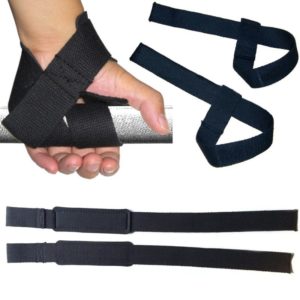
As a proponent of grip strength, I frown upon wrist straps. I feel dirty and ashamed when I use them and I will likely poke fun at you if you wear them. But they do serve a purpose on occasion.
Wrist straps strap you to the bar and all but eliminate the need to grip.
When pulling is the priority and you don’t want to be limited by grip strength, go ahead and strap up. Or if they’re being used in a strongman or weightlifting competition (they’re not allowed in powerlifting), take every advantage allowed within the rules.
Again, you should be plenty strong before you get to this point. Grip strength is an area that improves rapidly and it doesn’t take much to have hands that can handle most any training.
I have a simple pair of leather straps that I use once or twice a year. You can pick up a pair for less than $20.
Wraps
There are wrist wraps and knee wraps and they are very different.
Wrist wraps support the wrist and do not offer much in the way of assistance. It’s more like a belt for the wrists.
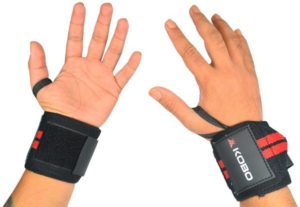
Knee wraps are up to 3 meters long and wrap around the knees more than a dozen times. They are put on so tight as to restrict movement and even blood flow. They are meant to assist 1RM in the squat and to a lesser extent deadlift.
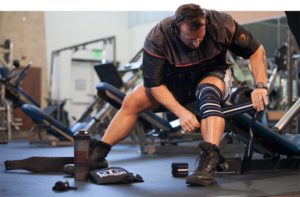
I’ve heard of lifters getting as much as 50lbs added to their squat because of knee wraps.
I’ve tried both wrist and knee wraps once and I do not recommend either.
Gloves
Not recommended. There are a couple reasons for that:
Like I mentioned above in the footwear section, there is some science as to why you want little cushion on your hands and feet. There are receptors in your body that detect pressure and changes in the muscle. Muscle spindles and golgi tendon organs are two of them.
Wearing gloves and cushy shoes “muffle” sensory feedback to your body and inhibit the force that the muscle will generate. The less pressure on your hands, the less you will be able to contract your muscles.
So gloves actually make you weaker, in addition to making you look weaker. 🙂
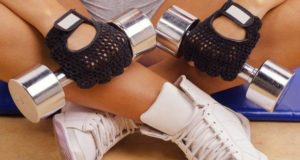
Another reason to not wear gloves is the extra padding essentially makes for a bigger handle. It makes things harder to grip (unnecessarily) and it’ll throw off your technique.
In kettlebell lifting especially, where you need to control the rotation of the handle, gloves will make that more difficult. It’s hard to get the feel for certain exercises when you can’t feel through layers of padding.
Summary
There is a time and a place for every piece of lifting gear, but none of it is necessary and there are only a few pieces that I recommend. Even within those recommendations there are some prerequisites. You should earn the right to use lifting gear through years of hard training and a respectable level of strength. One should never become dependent on it. Equipment should support the lifter, not assist in the lift and should only be used when nearing max weights. There is no status symbol associated with wearing lifting gear (at least not one that is positive in nature). We should all strive for strength that is built on our own efforts alone and can be applied to life outside of the gym.

